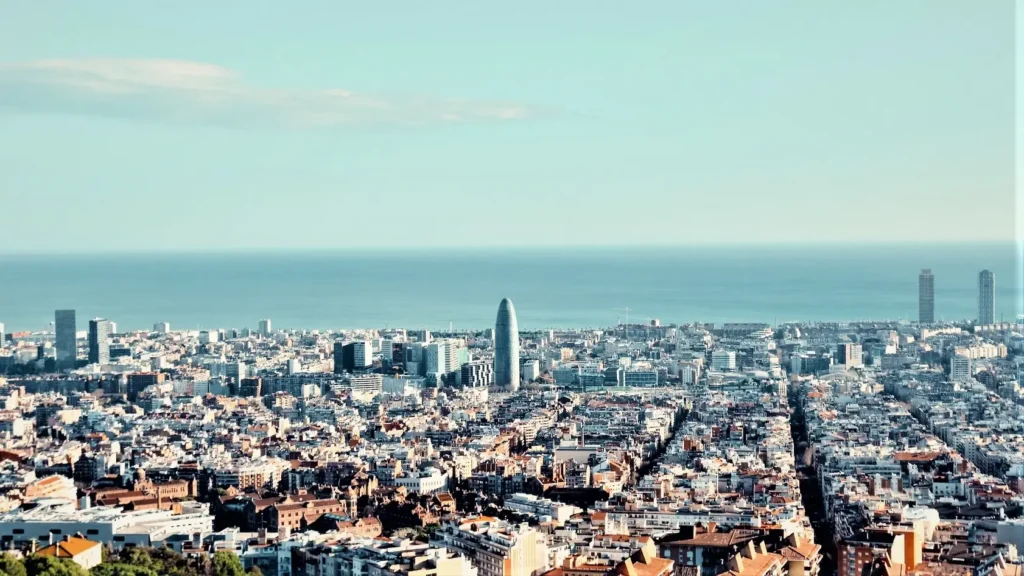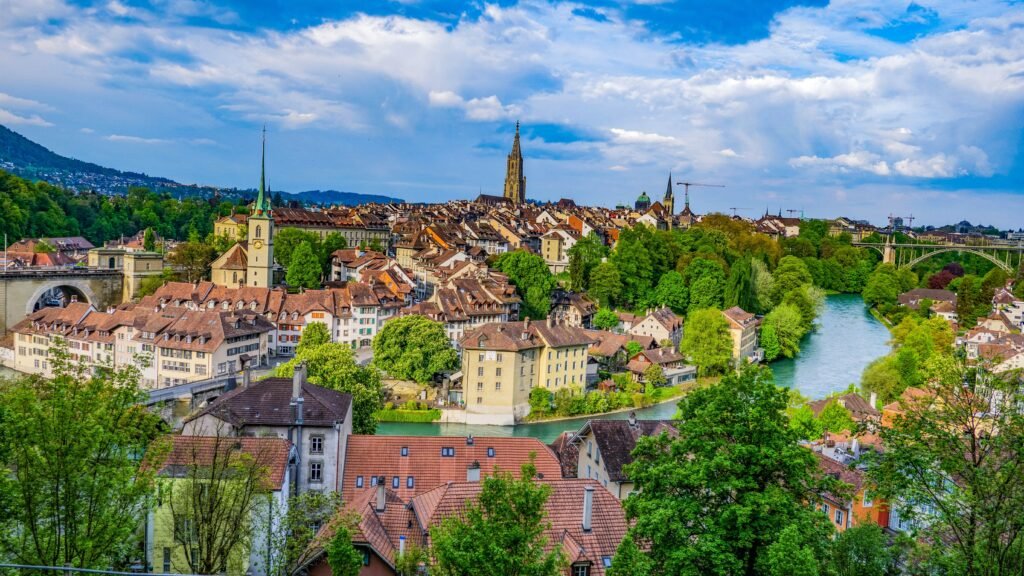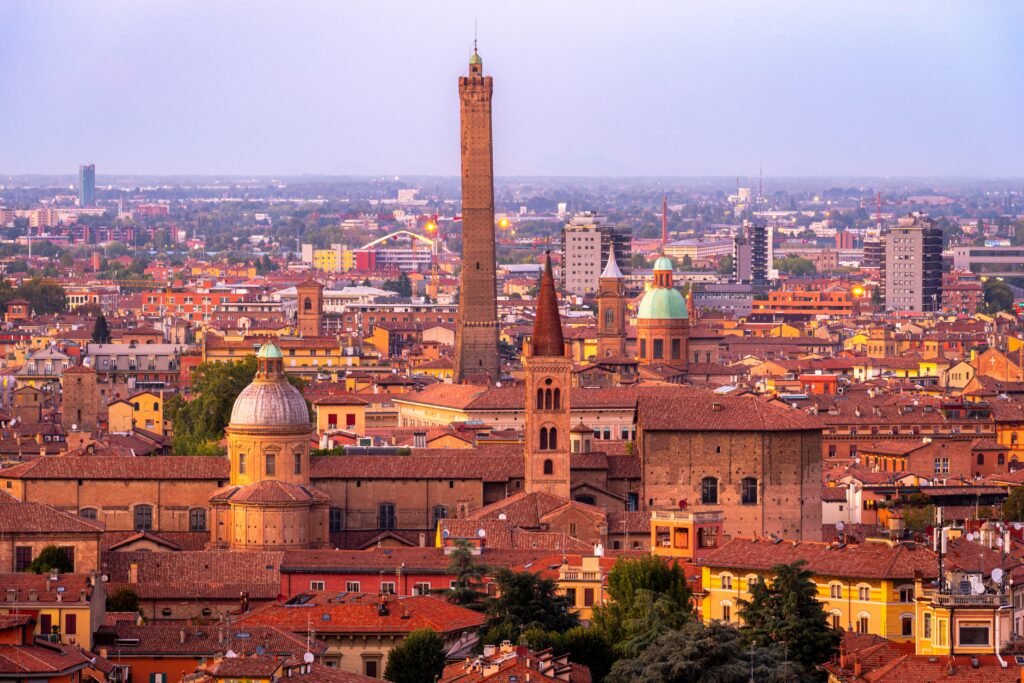Barcelona, the vibrant capital of Catalonia, is a city that beckons travelers from around the world with its stunning architecture, rich history, and delicious cuisine. While Barcelona offers plenty of attractions that come with a price tag, there are also countless free activities that allow you to experience the city’s beauty and culture without breaking the bank. Join me as we explore the top 10 free things to do in Barcelona. For the best flights to Barcelona, see here.
Table of Contents
Stroll Down La Rambla
Strolling down La Rambla is a quintessential Barcelona experience that offers a vibrant and eclectic mix of sights, sounds, and flavors. This iconic tree-lined pedestrian boulevard stretches for about 1.2 kilometers (0.75 miles) from Plaça de Catalunya to the Christopher Columbus Monument at Port Vell. Here’s a closer look at what you can expect when you embark on this memorable journey:
La Rambla as a Promenade: La Rambla is divided into several sections, each with its unique charm. As you begin your journey from Plaça de Catalunya, you’ll find yourself in the heart of the city’s shopping district. The wide pedestrian walkway is lined with cafes, shops, and boutiques, making it a great place for retail therapy and people-watching.
Street Performers: One of the defining features of La Rambla is the presence of street performers and artists. From living statues and mimes to musicians and painters, you’ll encounter a diverse range of talent as you make your way down the boulevard. Feel free to take photos or even engage with the performers, but remember to tip them if you do.
Mercat de la Boqueria: As you continue your stroll, you’ll come across the famous Mercat de Sant Josep de la Boqueria, often referred to simply as La Boqueria. This bustling market is a food lover’s paradise, with stalls offering fresh produce, seafood, charcuterie, sweets, and more. Even if you don’t plan to buy anything, it’s a sensory delight to explore the market’s vibrant colors and aromas.
Canaletes Fountain: About halfway down La Rambla, you’ll encounter the Canaletes Fountain, a historic landmark. According to local legend, drinking from this fountain ensures you’ll return to Barcelona. It’s also a popular gathering spot for sports fans to celebrate victories of FC Barcelona.

Plaça Reial: Just off La Rambla, you’ll find Plaça Reial (Royal Square), a picturesque square known for its palm trees, outdoor cafes, and the stunning architecture surrounding it. It’s a great place to rest and enjoy a coffee or a meal while admiring the surroundings.
Joan Miró’s Mosaic: Near the end of La Rambla, you’ll encounter a colorful mosaic by renowned Catalan artist Joan Miró embedded in the pavement. It’s a subtle yet artistic touch that pays tribute to one of Catalonia’s most celebrated artists.
Port Vell: Your journey along La Rambla culminates at Port Vell, where you’ll find the Christopher Columbus Monument and the picturesque marina. Take a moment to enjoy the sea breeze and perhaps explore nearby attractions like the Maremàgnum shopping center or the Aquarium Barcelona.
Evening and Nightlife: La Rambla comes alive in the evening with a bustling nightlife scene. Many bars and restaurants along the boulevard offer outdoor seating, creating a vibrant atmosphere. It’s an excellent place to enjoy tapas, sangria, or cocktails while savoring the ambiance.
While La Rambla is undoubtedly a must-visit in Barcelona, be mindful of your belongings as it can be crowded, and pickpocketing can be a concern. Additionally, prices at cafes and restaurants along La Rambla can be higher due to its popularity, so consider exploring nearby streets for more budget-friendly dining options. Regardless, a leisurely stroll down La Rambla promises an unforgettable taste of Barcelona’s culture and energy.
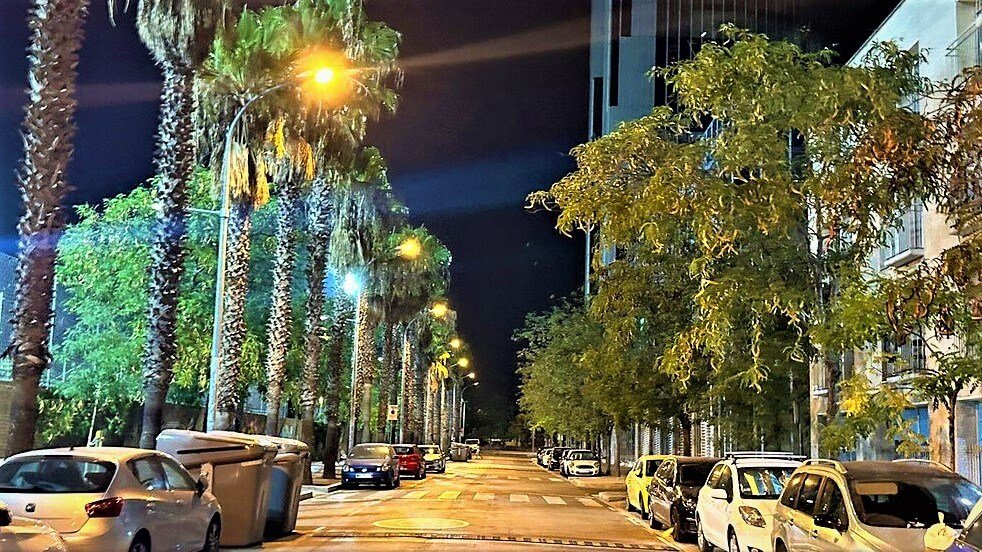
Visit the Gothic Quarter (Barri Gòtic)
Visiting the Gothic Quarter, known as Barri Gòtic in Catalan, is like stepping back in time to experience the rich history and medieval charm of Barcelona. This historic neighborhood is a maze of narrow winding streets, hidden squares, and centuries-old buildings, making it one of the most enchanting areas to explore in the city. Here’s a more in-depth look at what you can discover in the Gothic Quarter:
Ancient Origins: The Gothic Quarter is the heart of Barcelona’s Old Town and dates back to the Roman period when it was known as Barcino. As you wander its labyrinthine streets, you’ll encounter remnants of Roman walls and buildings, showcasing the neighborhood’s ancient roots.
Barcelona Cathedral (Catedral de Barcelona): The Gothic Quarter is home to the majestic Barcelona Cathedral, a masterpiece of Catalan Gothic architecture. You can enter the cathedral’s courtyard for free and admire its stunning facades and intricate details. If you’re interested in exploring the interior, a small fee is required.
Plaça Sant Jaume: This historic square is the political center of Barcelona and is flanked by the City Hall (Ajuntament) and the Palace of the Generalitat de Catalunya, the seat of the Catalan government. It’s a place where important events and celebrations take place, offering a glimpse into the city’s civic life.
Museu d’Història de Barcelona (MUHBA): While some of the MUHBA’s sites require admission, there are several archaeological sites scattered throughout the Gothic Quarter that you can explore for free. These excavations reveal Barcelona’s history layer by layer, including Roman ruins and medieval buildings.
Plaça Reial: This elegant square is known for its palm trees, ornate lampposts designed by Antoni Gaudí, and a vibrant atmosphere. It’s a great place to relax, enjoy a meal, or simply soak in the ambiance.
Carrer del Bisbe: This picturesque alley is famous for its neo-Gothic bridge connecting two buildings, creating a fairytale-like scene. It’s a popular spot for taking photographs and is emblematic of the neighborhood’s romantic charm.
Hidden Courtyards: As you explore the Gothic Quarter, keep an eye out for hidden courtyards and charming passages. These often lead to tranquil spots, tucked-away cafes, and boutique shops.
Plaça del Rei: This square is a historical treasure trove, featuring the Palau del Lloctinent (Lieutenant’s Palace), a Gothic palace that once housed the King’s lieutenant. The square is also home to the Capella Reial de Santa Àgata, a beautiful Gothic chapel.
Tapas and Cafés: The Gothic Quarter is brimming with traditional Spanish tapas bars and cozy cafés. It’s an excellent place to savor local cuisine, enjoy a coffee, or sample some of the city’s best churros and chocolate.
Street Art and Shops: While the Gothic Quarter is steeped in history, it also has a vibrant contemporary side. You’ll find street art, independent boutiques, and artisan shops scattered throughout the neighborhood, offering a blend of old and new.
Exploring the Gothic Quarter is a journey through time, where every corner reveals a piece of Barcelona’s storied past. Whether you’re captivated by its historic architecture, artistic treasures, or vibrant street life, a visit to Barri Gòtic is a must for anyone seeking to immerse themselves in the soul of this remarkable city.

Park Güell
Park Güell is one of Barcelona’s most iconic landmarks, known for its whimsical and colorful architecture designed by the famous Catalan architect Antoni Gaudí. While the central part of the park, known as the monumental zone, does require an entrance fee, there are still several free things to do and explore within Park Güell:
Park Güell’s Free Zone: Although the central, monumental zone of Park Güell requires a ticket for entry, a significant portion of the park is open to the public for free. As you enter, you’ll find yourself in a vast open space surrounded by lush greenery, dotted with colorful mosaics and Gaudí’s signature designs. This area alone offers plenty of opportunities for sightseeing and photography.
Mosaic Dragon (El Drac): One of the most iconic symbols of Park Güell is the colorful mosaic dragon, often referred to as “El Drac” or “the salamander.” It guards the entrance to the monumental zone and has become a popular photo spot. You can admire it from the outside without purchasing a ticket.
The Beautiful Terrace Walls: The undulating, serpentine bench that wraps around the main terrace is another one of Gaudí’s masterpieces. While you can’t sit on the benches in the monumental zone without a ticket, you can still marvel at the intricate tile work and unique design from the outside.
Nature Walks: Park Güell is situated on a hill, offering stunning views of Barcelona and the Mediterranean Sea. You can take a leisurely walk along the park’s trails, through pine forests, and enjoy the natural beauty of the area. The park is a designated UNESCO World Heritage Site due to its natural and architectural significance.
Public Art Installations: Throughout the free area of the park, you’ll discover several art installations and sculptures that blend seamlessly with the natural surroundings. Keep an eye out for pieces that reflect Gaudí’s commitment to integrating art and nature.
Views from the Free Area: Although the most panoramic viewpoints are within the paid monumental zone, you can still enjoy some impressive vistas of the city from the free areas of Park Güell. These vantage points offer great photo opportunities and a chance to appreciate the city’s landscape.
Botanical Garden: While the park’s famous mosaic-covered structures are the main attraction, Park Güell also features a quieter botanical garden with a variety of plants and trees. Take a leisurely stroll through this section to enjoy the flora and the peaceful atmosphere.
Picnicking: Pack a picnic and find a spot in one of the park’s open areas to relax and enjoy a meal in the midst of Gaudí’s artistic landscape.
It’s worth noting that the monumental zone, which includes the iconic multicolored mosaics, the dragon staircase, and Gaudí’s house, requires an admission fee. If you’re particularly interested in Gaudí’s architecture and want to explore these famous features up close, you can purchase a ticket. However, even without entering the monumental zone, you can still have a memorable and enriching experience in Park Güell by enjoying its free offerings and soaking in its artistic and natural beauty.
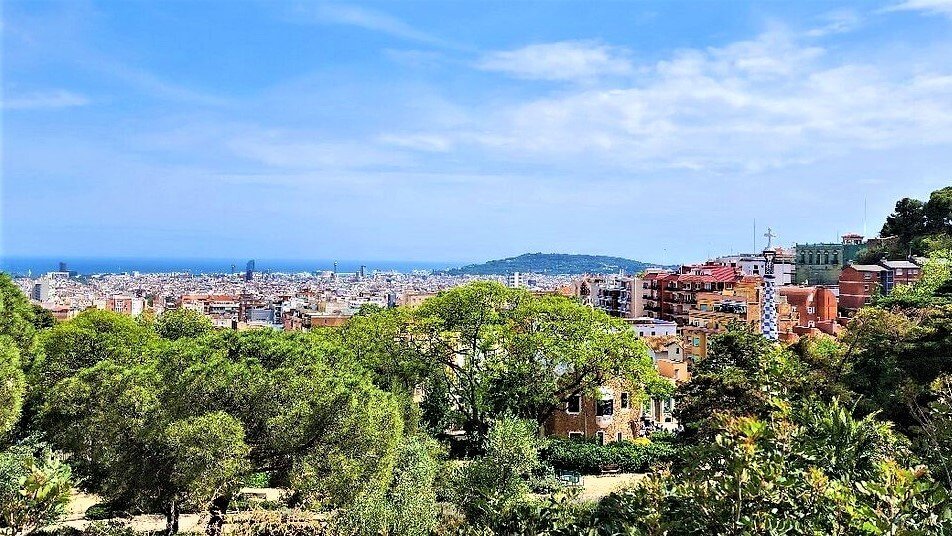
Barceloneta Beach
Barceloneta Beach is one of Barcelona’s most famous and popular urban beaches, and it offers a wide range of free activities and experiences for visitors to enjoy. Whether you’re looking to relax, soak up the sun, or engage in some beachfront fun, Barceloneta Beach has something for everyone. Here are more details about the free things to do at Barceloneta Beach:
Sunbathing and Swimming: The main attraction of Barceloneta Beach is, of course, its golden sandy shoreline and the sparkling Mediterranean Sea. You can spend your day sunbathing on the soft sands and taking refreshing dips in the sea to cool off. The beach is especially inviting during the warm summer months.
Beach Volleyball and Football: Barceloneta Beach features several beach volleyball courts and football fields set up along the sand. Grab a ball or join a pickup game with locals and fellow travelers. It’s a great way to stay active and socialize.
Skating and Biking: The beachfront promenade, known as the Passeig Marítim, is perfect for rollerblading, skateboarding, and biking. Many locals and tourists bring their own gear, but if you don’t have any, there are often rental options nearby.
Picnicking and Barbecues: Bring a picnic basket with your favorite snacks and drinks or fire up a portable barbecue (where permitted) and enjoy a meal with a view. There are picnic areas equipped with tables and benches for your convenience.
Beachfront Bars and Restaurants: While dining at the beachfront restaurants isn’t free, you can still take advantage of the great atmosphere by ordering a drink and enjoying the beachside ambiance. Sip a cool beverage or have a coffee while taking in the stunning sea views.

Beach Yoga and Workouts: Many fitness enthusiasts gather at Barceloneta Beach for yoga sessions, group workouts, and even impromptu dance classes. Keep an eye out for flyers or local groups advertising free sessions.
Sand Sculptures: Talented sand artists often create intricate and massive sculptures on the beach. Stroll along the shoreline to admire these temporary masterpieces. Feel free to leave a tip if you’re impressed by their craftsmanship.
People-Watching: Barceloneta Beach attracts a diverse crowd of locals and tourists. People-watching is a favorite pastime here, and you can observe everything from sunbathers and swimmers to beach games and performers.
Evening Sunset Views: The beach is an excellent place to catch the stunning Barcelona sunset. As the sun sinks below the horizon, the colors across the Mediterranean are breathtaking. Bring a camera to capture the moment or simply savor it with your own eyes.
Seafront Art Installations: Occasionally, you’ll find art installations and sculptures along the beachfront promenade, providing a cultural touch to your visit. These installations often change, so keep an eye out for new additions.
Barceloneta Beach is easily accessible from the city center, making it a convenient and enjoyable destination for a day of relaxation and recreation. Whether you’re seeking a leisurely beach day, an active outing, or a peaceful sunset experience, Barceloneta Beach offers a diverse range of free activities to make your visit memorable.

Magic Fountain of Montjuïc
The Magic Fountain of Montjuïc (Font Màgica de Montjuïc) is a captivating and iconic attraction in Barcelona that offers a mesmerizing free show for visitors to enjoy. Located at the base of Montjuïc Hill, near the Plaça d’Espanya, this spectacular fountain combines music, water, and light to create a magical performance that is a must-see during your visit to the city. Here’s more information about the Magic Fountain of Montjuïc and what you can experience for free:
History: The Magic Fountain was built for the 1929 Barcelona International Exposition, and it has since become a beloved symbol of the city. The fountain underwent extensive renovations and reopened in 1992 for the Barcelona Olympic Games.
Synchronized Light and Music Shows: The highlight of the Magic Fountain is its nightly light and music shows. These free performances feature a dynamic combination of colored lights, water jets, and music that are perfectly synchronized. The shows typically last around 20-30 minutes and are held at various times depending on the season.
Show Schedule: The show schedule varies throughout the year, so it’s a good idea to check the official website or inquire locally for the most up-to-date information. Generally, the fountain shows take place on Thursday through Sunday evenings, with additional shows during special events and holidays.
Themes and Music: The Magic Fountain performances are organized around different themes, and the music selections complement the themes. You can expect to hear a wide range of music genres, from classical to contemporary, during the shows. The diverse music choices add to the enchanting atmosphere.
Spectacular Views: While you can enjoy the fountain show from the ground level, it’s also worth considering viewing it from higher vantage points. Montjuïc Hill itself offers great views of the city, and you can see the fountain in action from here, providing a unique perspective.
Accessibility: Access to the Magic Fountain area is free, and there are plenty of viewing spots around the circular pool where you can watch the show. Arrive a bit early to secure a good spot, especially during peak tourist seasons when it can get crowded.
Evening Outing: The Magic Fountain show makes for a delightful evening outing in Barcelona. It’s an excellent activity for families, couples, and groups of friends. Many visitors combine the fountain show with a leisurely stroll along Montjuïc Hill and a visit to nearby attractions like the National Palace or the Joan Miró Foundation.
Photography and Videography: Don’t forget to bring your camera or smartphone to capture the dazzling visuals of the fountain show. The illuminated water displays make for fantastic photo and video opportunities.
The Magic Fountain of Montjuïc is a testament to Barcelona’s artistic and cultural heritage. It’s a delightful free activity that allows you to experience the city’s magic and creativity while enjoying an enchanting multimedia spectacle. Whether you visit for the music, the lights, or the sheer wonder of it all, the Magic Fountain of Montjuïc is a must-see attraction during your time in Barcelona.
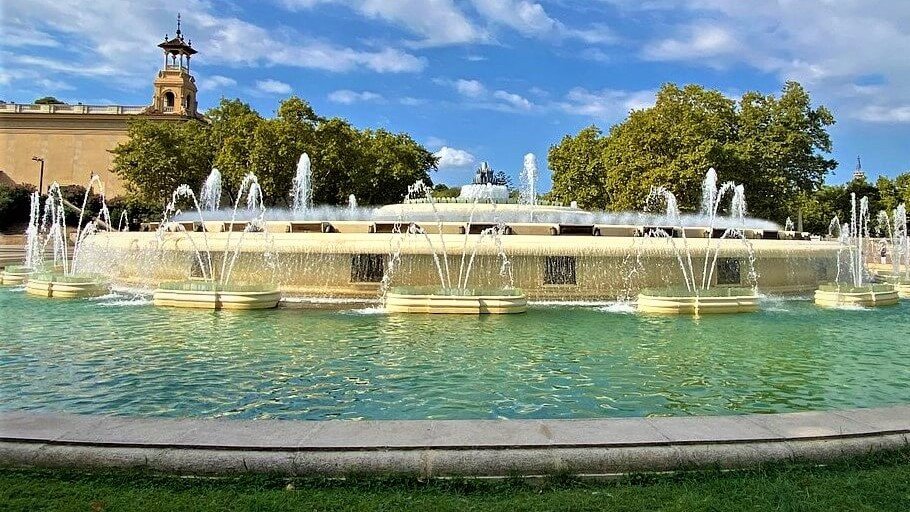
Explore Parc de la Ciutadella
Parc de la Ciutadella is a lush and expansive green oasis nestled in the heart of Barcelona. This beautiful park is a favorite among locals and tourists alike, offering a wide array of free activities and attractions to enjoy. Here’s a closer look at what you can explore and experience in Parc de la Ciutadella:
History: Parc de la Ciutadella has a rich history dating back to the 18th century. It was originally designed as a military citadel (hence the name) but was later transformed into a public park. It played a significant role in the 1888 Barcelona Universal Exposition.
Picnicking: One of the most popular activities in Parc de la Ciutadella is picnicking. The park is dotted with lush lawns and shaded areas, making it the perfect spot to relax with friends or family and enjoy a picnic. Many locals come here to unwind and have a meal al fresco.
Cascada Monumental: The park’s centerpiece is the Cascada Monumental, a grand waterfall and fountain designed by Josep Fontserè with the help of a young Antoni Gaudí. The waterfall is surrounded by sculptures and is an impressive sight to behold. It’s an ideal spot for photos.
Boat Rental: On the park’s large central pond, you can rent rowboats to paddle around. It’s a fun and tranquil way to experience the park from a different perspective. Boating is especially popular on sunny days.
The Parliament of Catalonia: The park is home to the Parliament of Catalonia, housed in a neoclassical building known as the Palau del Parlament de Catalunya. While you can’t access the interior without a tour reservation, the building’s exterior and grand staircase are worth admiring.

The Umbracle: This wrought-iron structure near the Cascada Monumental is a fantastic place to take a leisurely walk and enjoy the surrounding gardens. It provides shade on hot days and offers a peaceful atmosphere.
The Zoology Museum: While the Museu de Zoologia does require an entrance fee, you can admire the impressive sculptures of various animals that adorn the museum’s façade from the outside. It’s an intriguing architectural element.
The Glass House (Umbracle): The Umbracle, a greenhouse-like structure, houses tropical and subtropical plants. Although it’s primarily used for research and botanical education, you can often glimpse the lush greenery from the outside.
Street Performers and Musicians: Parc de la Ciutadella is a popular place for street performers, musicians, and artists to showcase their talents. You might come across live music, acrobatics, and other forms of entertainment while strolling through the park.
Local Events and Festivals: The park hosts various cultural and community events throughout the year, including music festivals, open-air cinema screenings, and art exhibitions. Check the local event calendar to see if any events align with your visit.
Playgrounds and Sculptures: If you’re traveling with children, there are several playgrounds in the park, as well as sculptures and statues that can pique their curiosity and imagination.
Parc de la Ciutadella is not just a park; it’s a haven for relaxation, recreation, and culture in the midst of Barcelona’s bustling cityscape. Whether you’re seeking a peaceful day surrounded by nature or looking for free entertainment and cultural experiences, this park has something for everyone to enjoy.
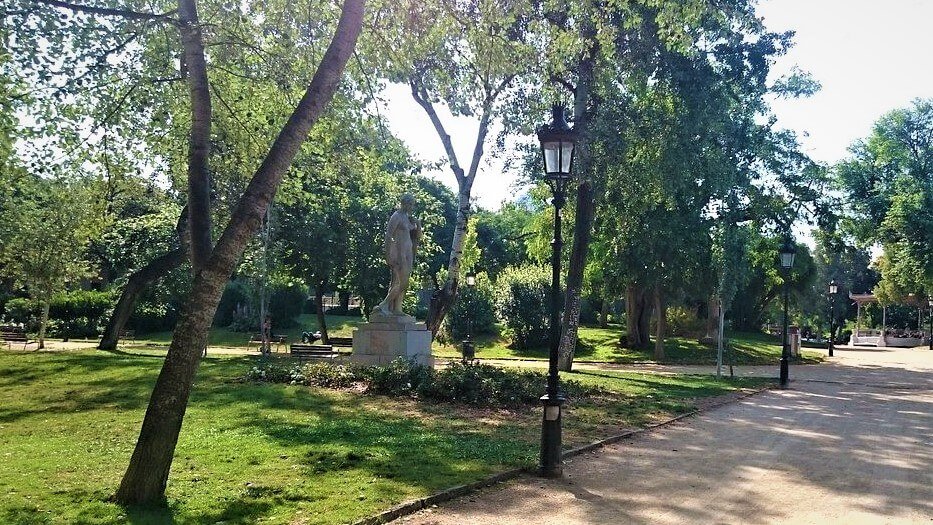
Free Barcelona Museums on Sundays
Barcelona offers a fantastic opportunity for budget-conscious travelers and culture enthusiasts: many of the city’s top museums and cultural institutions offer free admission on Sundays, typically in the late afternoon. This initiative allows visitors to explore Barcelona’s rich history, art, and culture without having to pay an entrance fee. Here’s more information about this “Free Museums on Sundays” program and some of the notable museums you can visit for free:
Program Details: The “Free Museums on Sundays” initiative, known as “Diumenges al Museu” in Catalan, offers free admission to a rotating selection of museums and cultural centers every Sunday afternoon. While the exact schedule and participating institutions may change, the program typically runs from 3 PM until closing time.
Museu Picasso: One of the most renowned art museums in Barcelona, the Museu Picasso is dedicated to the life and works of the famous Spanish artist Pablo Picasso. It houses an extensive collection of his paintings, drawings, sculptures, and ceramics, covering his early years and various artistic phases.
Museu Nacional d’Art de Catalunya (MNAC): Located in the stunning Palau Nacional, the MNAC showcases an exceptional collection of Catalan art spanning from the Romanesque period to the 20th century. It includes masterpieces by renowned artists like El Greco, Goya, and Dalí.
Museu d’Història de Barcelona (MUHBA): The MUHBA consists of multiple archaeological sites and museums scattered throughout Barcelona. These sites reveal the city’s history, including its Roman and medieval past, and are part of the free program on Sundays.

Museu Frederic Marès: This museum houses the eclectic collection of sculptor Frederic Marès, featuring an assortment of sculptures, decorative arts, and curiosities from different eras. It’s a fascinating place to explore the artist’s passion for collecting.
Museu de la Música: Located in the Auditori building, this museum is dedicated to the history and evolution of music. It showcases a diverse range of musical instruments from various cultures and time periods.
Museu Blau: Also known as the Natural Science Museum of Barcelona, the Museu Blau focuses on the natural world, geology, and the environment. It’s an engaging place for both children and adults interested in the natural sciences.
Museu del Disseny de Barcelona: The Design Museum of Barcelona explores the world of design, featuring exhibits on fashion, product design, graphic design, and more. It’s a creative and inspiring space.
CaixaForum Barcelona: Although not part of the “Free Museums on Sundays” program, the CaixaForum Barcelona is worth mentioning. It often hosts free exhibitions, workshops, and cultural events, making it a great place to explore art and culture on a budget.
Check for Updates: Since the list of participating museums and the exact schedule can change, it’s advisable to check the official websites of the museums or consult local resources for the most up-to-date information before planning your visit.
Exploring Barcelona’s museums on a Sunday can be a wonderful way to delve into the city’s cultural heritage and artistic treasures. Whether you’re interested in art, history, music, or design, the “Free Museums on Sundays” program provides a cost-effective way to immerse yourself in Barcelona’s vibrant cultural scene.
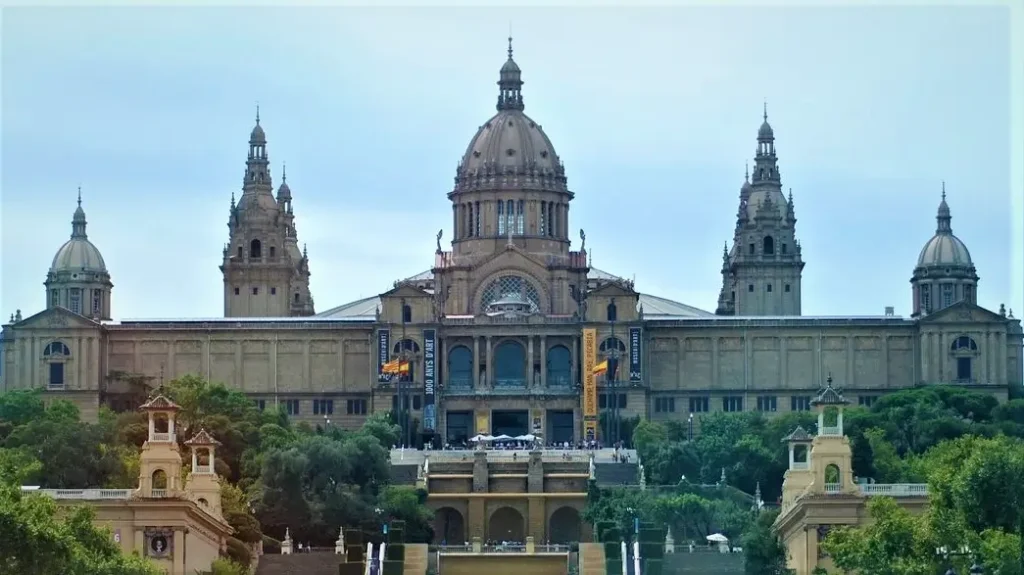
Barcelona’s Street Art
Barcelona’s street art scene is vibrant and diverse, with the city’s streets and neighborhoods serving as a canvas for both local and international artists. Exploring Barcelona’s street art is a free and captivating way to immerse yourself in the city’s urban culture and creativity. Here’s a deeper look at Barcelona’s street art and how to experience it:
El Raval: This neighborhood is a hub for street art in Barcelona. As you wander through the streets of El Raval, you’ll encounter a wide variety of graffiti, murals, stencils, and paste-ups. The Carrer de l’Hospital and Carrer de Sant Pau are particularly rich in street art.
Poblenou: The Poblenou district is known for its industrial past, and it has embraced street art as a form of urban revitalization. The area around the former industrial complex known as the “Poblenou Urban District” is a hotbed for street art. The neighborhood also hosts an annual street art festival called “Mural,” which attracts artists from around the world.
El Born: El Born is another neighborhood where you can find intriguing street art. Carrer de l’Argenteria is a great place to start, with its walls adorned with colorful murals and artistic expressions.
Art Walks: Barcelona Street Style Tour and GraffMap Barcelona offer guided street art tours. These tours provide insights into the local street art scene, introduce you to prominent artists, and take you to some of the city’s best street art hotspots.
The Urban Art Museum of Poblenou: This open-air museum in Poblenou features large-scale murals created by renowned street artists. It’s a curated collection of urban art that showcases the diversity of styles and techniques in Barcelona’s street art scene.
Street Art Festivals: Keep an eye out for street art festivals and events that regularly take place in Barcelona. These festivals, such as “Poblenou Urban District” and “Open Walls Conference,” invite artists to create new murals and installations, often turning entire neighborhoods into outdoor art galleries.
Local Artists: Barcelona is home to many talented local street artists, including names like Btoy, Pez, and El Xupet Negre. Exploring their works can provide insight into the city’s unique artistic identity.
Legal Walls: Some areas in Barcelona have designated “legal walls” where street artists can create freely without fear of legal repercussions. These walls often feature a rotating selection of artwork, providing a dynamic and ever-changing urban art experience.
Explore Off the Beaten Path: While the above-mentioned neighborhoods are known for their street art, don’t be afraid to venture into less touristy areas to discover hidden gems. You might stumble upon captivating street art in unexpected places.
Capture the Moment: Bring your camera or smartphone to capture the vibrant street art scenes. Many of these works are temporary, and artists continually refresh the city’s visual landscape with new creations.
Barcelona’s street art reflects the city’s dynamic and progressive spirit. It’s a powerful form of self-expression and a means of transforming public spaces into open-air galleries. Exploring Barcelona’s street art is not only a free activity but also a unique way to connect with the city’s culture and creativity while discovering the talent of local and international artists.

Mercat de Sant Josep de la Boqueria
Mercat de Sant Josep de la Boqueria, often simply referred to as La Boqueria, is one of Barcelona’s most iconic and vibrant markets. Located just off La Rambla, this bustling marketplace is a feast for the senses, offering an array of colorful stalls and tantalizing food experiences. While you might be tempted to indulge in delicious Spanish delicacies, there are also several free things to do and enjoy at La Boqueria:
Window Shopping: Even if you don’t plan on buying anything, La Boqueria is a visual delight. Stroll through the market and take in the stunning displays of fresh produce, seafood, meats, cheeses, and more. It’s an excellent place for food photography and observing the market’s lively atmosphere.
People-Watching: La Boqueria attracts a diverse crowd of locals and tourists alike. Spend some time people-watching as you sip on a coffee or enjoy a fresh fruit juice from one of the stalls. It’s a fantastic opportunity to observe the bustling energy of Barcelona.
Taste Samples: Many vendors offer free samples of their products, especially if you show genuine interest in their offerings. You might be able to try a piece of cheese, a slice of fruit, or a taste of a local specialty. Just be polite and ask before sampling.
Observe Food Preparation: Some stalls, particularly those selling seafood or freshly prepared dishes, offer a front-row seat to the cooking process. Watching skilled chefs at work can be an educational and fascinating experience.
Learn About Local Ingredients: Strike up a conversation with the vendors, and you’ll often find that they are passionate about their products. Ask questions about the ingredients, their origins, and how they are used in Catalan cuisine. You’ll gain insights into the region’s culinary traditions.

Artisan Products: Besides fresh produce and ingredients, La Boqueria is home to stalls selling artisanal products such as chocolates, spices, olive oils, and preserves. You can explore these offerings without making a purchase.
Absorb the Atmosphere: La Boqueria is not just a market; it’s a cultural experience. Take your time to soak in the lively ambiance, the sounds of vendors hawking their goods, and the vibrant colors of the market’s offerings.
Snap Photos: La Boqueria is a photographer’s paradise. Capture the vivid colors, bustling crowds, and unique products on camera. Remember to be respectful of vendors and shoppers when taking photos.
Discover New Foods: La Boqueria is an excellent place to broaden your culinary horizons. Explore unfamiliar fruits, vegetables, and seafood varieties. You might discover new flavors and ingredients that you want to try during your stay in Barcelona.
Cultural Immersion: Visiting a local market is an authentic way to immerse yourself in the daily life and culture of Barcelona. It’s an opportunity to witness the city’s food culture in action and engage with locals.
While you can certainly indulge in a gastronomic adventure at La Boqueria by trying some of its delectable offerings, you can also enjoy the market without spending a dime by simply immersing yourself in the sights, sounds, and flavors of this iconic Barcelona landmark.
Bunkers del Carmel
Bunkers del Carmel, officially known as the Turó de la Rovira, is a unique and picturesque historical site in Barcelona that offers panoramic views of the city. This hidden gem has become increasingly popular in recent years, and it’s an excellent spot for travelers looking to enjoy stunning vistas of Barcelona at no cost. Here’s more information about Bunkers del Carmel and what you can experience there:
Historical Significance: Bunkers del Carmel holds a significant place in Barcelona’s history. During the Spanish Civil War in the 1930s, the site was used as an anti-aircraft battery and a defense point for the city. The bunkers are a reminder of this tumultuous period in Spain’s history.
360-Degree Views: The main attraction of Bunkers del Carmel is undoubtedly the breathtaking 360-degree panoramic views of Barcelona. From this elevated vantage point, you can see the city’s iconic landmarks, including the Sagrada Família, Park Güell, Montjuïc Hill, and the Mediterranean Sea. The view is particularly stunning during sunrise and sunset.
Sunbathing and Picnicking: The open space at Bunkers del Carmel is ideal for sunbathing, picnicking, or simply relaxing while taking in the views. Many visitors bring snacks, sandwiches, and beverages to enjoy a meal with a view.
Photography: The bunkers are a paradise for photographers. Capture the cityscape against different lighting conditions, or use the scenic backdrop for portraits. It’s a popular spot for both amateur and professional photographers.
Peaceful Escape: Despite its growing popularity, Bunkers del Carmel retains a somewhat tranquil atmosphere compared to other viewpoints in Barcelona. It’s a peaceful place to escape the hustle and bustle of the city.

Free Access: One of the best aspects of Bunkers del Carmel is that it’s entirely free to access. There are no entrance fees or admission charges, making it a budget-friendly attraction in Barcelona.
Getting There: Bunkers del Carmel is located on a hill, and the climb to the top can be a bit steep, but it’s manageable for most visitors. You can reach the site on foot or by using public transportation. The nearest metro station is Alfons X (L4), and from there, it’s about a 20-minute walk to the bunkers.
Time Your Visit: To make the most of your visit, consider going either early in the morning to catch the sunrise or in the late afternoon to witness the sunset. These times offer the best lighting for photography and a chance to see Barcelona in a different light.
Comfortable Footwear: Wear comfortable shoes for the climb to the top, as the paths can be uneven. Bringing some water and sunscreen is also advisable, especially during the warmer months.
Guided Tours: While Bunkers del Carmel is a self-guided attraction, you can opt for guided tours if you want to learn more about the history and significance of the site. Many local tour companies offer guided experiences that include a visit to the bunkers.
Bunkers del Carmel provides a serene escape from the city’s hustle and a unique opportunity to soak in the beauty and history of Barcelona. Whether you’re interested in history, photography, or simply enjoying stunning views, this free attraction is well worth a visit during your time in Barcelona.
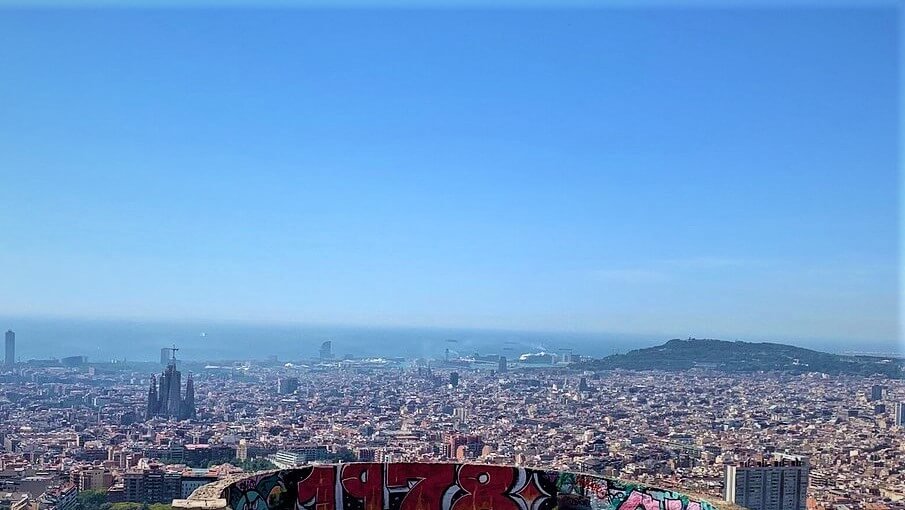
Free Things to Do in Barcelona: Conclusion
Barcelona’s charm lies not only in its iconic landmarks but also in its everyday life and culture. By exploring these free activities, you’ll gain a deeper appreciation for this remarkable city without straining your wallet. So, pack your walking shoes and get ready to savor the beauty and culture of Barcelona on a budget. For the best travel insurance, see here. ¡Vamos a Barcelona!
Check out the other blogs.
